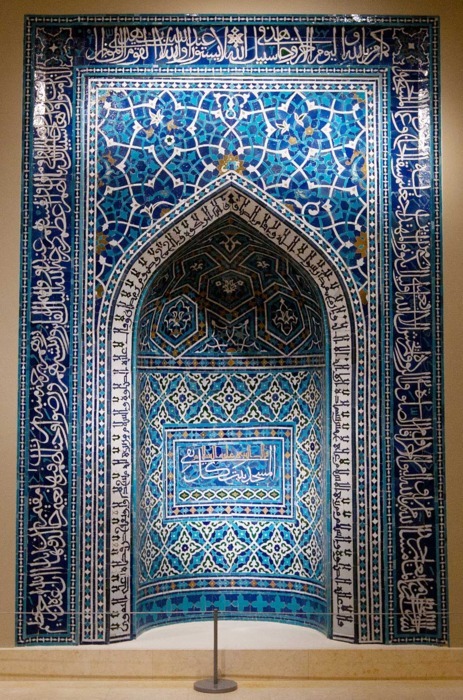The Art Is Gorgeous. The History That Goes Along With It...Not So Much. No Wonder the Met Tries So Hard to Blur It
There's a brand new wing of New York's Metropolitan Museum of Art devoted entirely to a wide array of stunning Islamic art. The shapes, the colours, the intricate and infinitely inventive patterns--all are dizzying, and dazzlingly beautiful. Why, one would have to be an utter churl--say, like this chap--to cavil about it:
Antiquity washes away the immediacy of historical pain and injustice. Our ability to feel suffering is indexed directly to its epoch: the more remote, the more detached we are. Museums play on this—pander to this—and to our forgetfulness. History is softened, elided, or erased. Reality is too harsh; beauty numbs our compassion and critical mind
The beauty of things is amply displayed at the Metropolitan Museum of Art's recently opened "New Galleries for the Art of the Arab Lands, Turkey, Iran, Central Asia, and Later South Asia," a massive remodeling of the museum's former Islamic art galleries; but the realities of history are carefully disguised.
The engine of Islam was Arab imperialism. Indeed, the new galleries bear the name of the conquerors—"Arab" lands—and identifies the conquered only by their locations. The first exhibit makes the point clearly, if unintentionally: It is a display of Qur'ans, announcing the putative unity of Islam and its (capitalized) Prophet. If not quite treated as divine revelation, Islam is depicted as appearing out of nowhere. Only a visitor coming straight from the neighboring Ancient Near Eastern galleries will have a sense of Islam's historical origins.
Exhibit labels in the Arab Lands galleries say Islamic power "arose" in the former Roman and Byzantine empires. Countries "came under the rule" of Islamic governors. Islamic dynasties "established themselves" or "took control" of various places. Sometimes Islamic forces "ousted" or "wrested control" from one another. The euphemisms deliberately mask the nature of Islam's spread. Islamic sources themselves more forthrightly call it conquest.
The nameless inhabitants of these worlds are Muslim. There is no mention of the multitudes of cultures destroyed, subsumed, and reduced to minority status. Mamluks are described as "elite soldiers of slave origins"—obscuring the fact that slaves, taken as prisoners or given up as children, formed the backbone of most Muslim armies. The Islamic conquest of India, in which millions of Hindus perished, is described as "the arrival of the Muslim rulers." The word "Christian" appears perhaps six times in the exhibition halls.
The word "Jew" appears once, and "Jewish" three times—all, predictably, in connection with Spain...



No comments:
Post a Comment